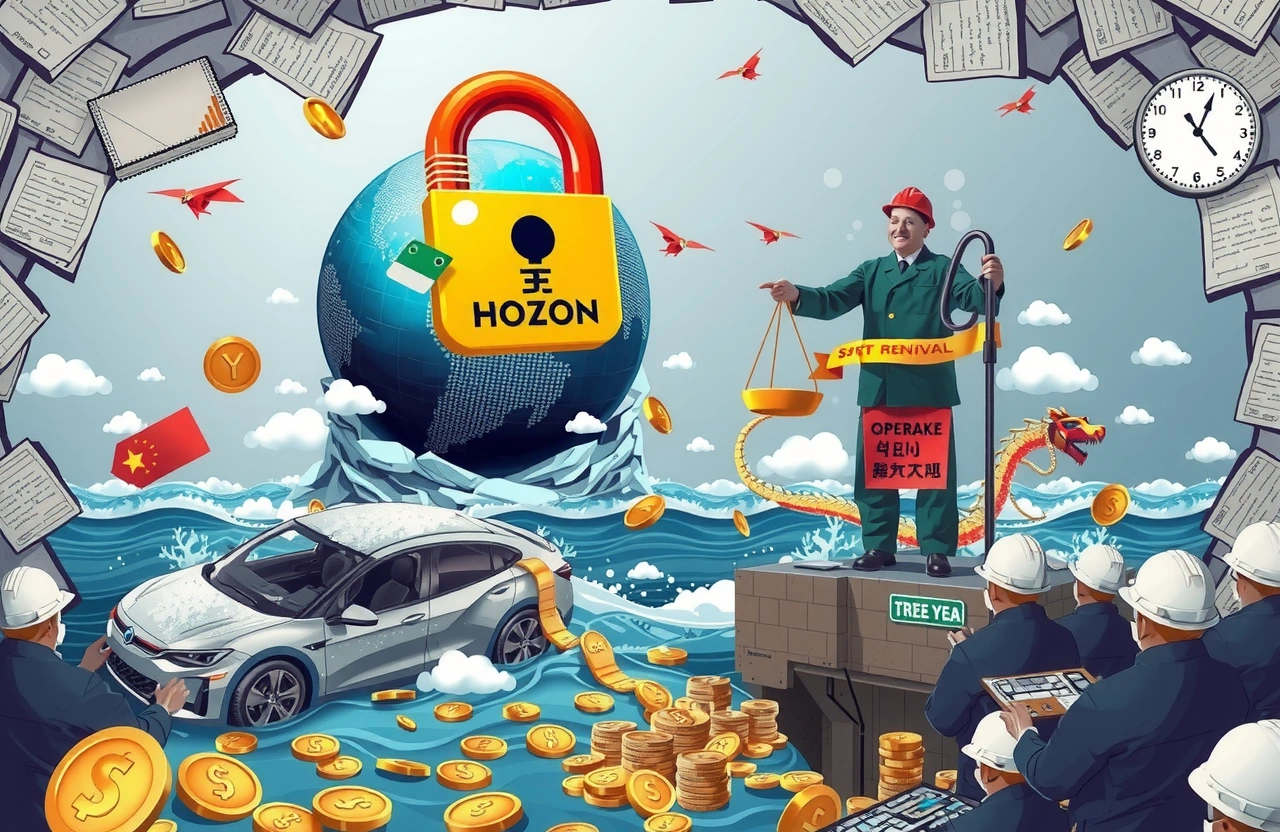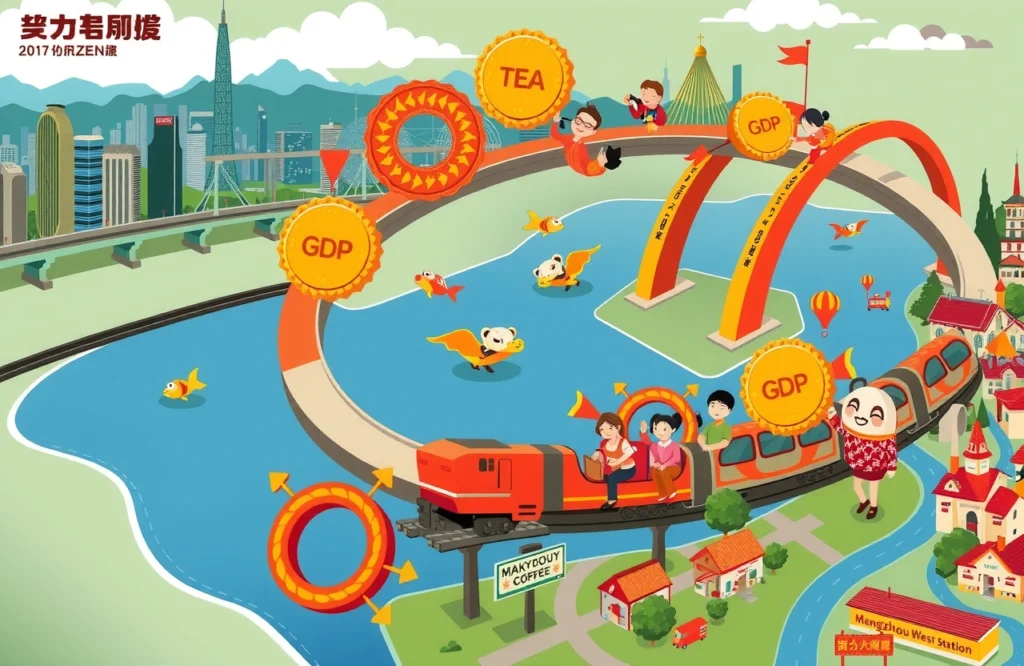For the second time this year, Hozon New Energy Automobile Co.—parent company of China’s embattled EV brand Neta (哪吒汽车)—has seen 2 billion yuan ($278M) in equity frozen by authorities. This latest judicial blow compounds Neta’s eight-month production stoppage and ongoing bankruptcy restructuring, forcing the electric vehicle maker to accelerate its self-rescue initiatives amid a worsening cash crisis.
The Nanjing Xuanwu District Court imposed this three-year freeze on Hozon’s shares in subsidiary Zhongsai Tianxia Automotive Sales Service Co., mirroring identical restrictions enacted last January. With production lines silent since November 2024 yet still technically operational, Hozon’s administrator issued urgent investor recruitment notices in late June while retaining over 400 technicians in a last-ditch self-rescue effort to revive the brand that once sold over 460,000 vehicles.
- Nanjing court freezes $278M in Hozon subsidiary equity for 3 years
- Production halted since November 2024 with bankruptcy proceedings underway
- $26 billion three-year losses despite earlier sales success
- Self-rescue plan targets investors to restart operations
- Valuable assets include Chinese factories and overseas production hubs
Equity Freezes Tighten Financial Constraints
These consecutive equity restrictions create untenable cash constraints during Hozon’s delicate restructuring phase. The two freezes target identical shareholdings in Zhongsai Tianxia—a critical distribution arm established in June 2018 and wholly owned by Hozon with registered capital matching the frozen amount.
Subsidiary Functionality Paralyzed
Zhongsai Tianxia, led by CEO Fang Yunzhou (方运舟), handles nationwide dealership operations spanning new car sales, parts distribution, and used vehicle services. Its paralysis directly attacks Hozon’s revenue streams amid restructuring. Industry analysts note such judicial measures typically precede creditor lawsuits or tax compliance disputes.
Court Actions Signal Deepening Troubles
The Nanjing court’s repeated interventions suggest unresolved liabilities compounding Neta’s dire self-rescue challenge. EV manufacturers require continuous capital infusion—this freeze prevents Hozon from leveraging these shares for emergency financing, critically narrowing options.
Implementation of Self-Rescue Mechanisms
Hozon formally entered bankruptcy reorganization on June 12th following court acceptance, triggering a managed self-rescue process governed by judicial oversight. The administrator’s late-June “Pre-Recruitment Announcement of Intention Investors” outlined preservation of core assets while inviting bids.
Operational Standby Status Maintained
Despite eight idle months, the administrator confirmed production equipment remains functional with architectural integrity preserved at Zhejiang’s Tongxiang headquarters. Retaining 400+ specialists preserves restart capability—a strategic pillar of the self-rescue blueprint.
Bankruptcy Protection Framework
China’s Enterprise Bankruptcy Law requires stakeholder-approved restructuring plans within nine months. Creditors will convene by August to assess viability of Neta’s self-rescue propositions. The administrator seeks investors offering both capital and complementary industrial resources.
Asset Portfolio Valuation Analysis
The administrator’s May 2025 asset disclosures offer potential investors a roadmap through Hozon’s remaining value drivers.
- Tongxiang facility: 23-hectare industrial land parcel
- Production systems: Integrated assembly lines, specialized tooling, transport fleets
- IP portfolio: Proprietary EV software and registered trademarks
- Receivables: Substantial unpaid invoices from B2B partners
Tangible Production Infrastructure
The Tongxiang manufacturing hub serves as anchor asset alongside Jiangxi Yichun and Guangxi Nanning vehicle plants. Strategic parts factories operate across Anhui province in Tongcheng, Fengtai, and Fengyang—though their current operational status remains uncertain.
Intellectual Property Valuation
‘Neta Auto’ represents Hozon’s most valuable intangible asset given historical sales volumes. Proprietary electric drive systems and battery management software constitute additional IP leverage during self-rescue negotiations.
International Production Footprint
Beyond domestic operations, Neta established Complete Knocked Down assembly facilities designed specifically for export markets.
ASEAN Manufacturing Strategy
Thailand and Indonesia factories operate under CKD schemes shipping disassembled components for final local assembly, minimizing import duties. This international infrastructure positions self-rescue bidders for Southeast Asian market entry.
Export-Oriented Production Model
CKD operations bypass China’s domestic EV oversupply crisis by targeting emerging EV adoption markets. While facilities are currently inactive, recommissioning requires minimal capital compared to greenfield projects—supporting Hozon’s self-rescue asset pitch.
Financial Losses Mount Despite Sales
Neta’s astronomical financial hemorrhage revealed in their recent HKEX filing paints a stark survival scenario.
Sustained Cash Burn Pattern
According to HKEX documents:
- 2021: $6.8B net loss
- 2022: $9.3B net loss
- 2023: $9.6B net loss
Rampant price wars forced unsustainable discounting despite significant volume.
Hong Kong IPO Complications
The late-June listing attempt came amid liquidity exhaustion, suggesting desperation financing tactics. Listing rules normally preclude recently bankrupted applicants—professional analysts question processing likelihood without verified restructuring commitments.
Accelerated Self-Rescue Pathways
The managed bankruptcy process creates structured opportunity despite mounting troubles. Successful self-rescue requires simultaneous financial and competitive repositioning.
Investment Recruitment Strategy
The administrator specifically seeks strategic capital partners owning EV supply chain advantages—especially battery suppliers or charging infrastructure operators. Such integrations could unlock vital production cost reductions.
Operational Restructuring Imperatives
Even with investment, viable self-rescue demands ruthlessly trimming underperforming segments while focusing on higher-margin exports and commercial vehicle variants. Phased restart proposals suggest initial Thailand facility renaissance.
Prospects Amid Market Turmoil
Neta’s legacy as an early dual-license recipient (production/sales qualification) signals fundamental engineering competence—perhaps their greatest self-rescue advantage. History demonstrates Chinese EV manufacturers’ resurrection capabilities when rescuing stakeholders align strategically.
Asset acquirers now calculate risk against valuation fundamentals: While physical assets carry measurable worth, brand revival requires overcoming consumer confidence erosion. Foreign champions like BYD weathered similar crises through 2009-2013 before emerging dominant—proving effective self-rescue can rewrite corporate trajectories.
Neta’s restructuring represents inflection point dynamics throughout China’s overcrowded EV sector. Declining battery costs, accelerating ASEAN electrification, and imminent industry consolidation create unique restructuring scenarios where self-rescue specialists thrive.
All stakeholders should monitor creditor committee decisions anticipated late-August and forthcoming HKEX listing determinations. The administrator emphasizes investor enquiries through Zhejiang provincial court channels—financial institutions and supply chain strategists share vested interest in sustainable self-rescue outcomes. For more EV industry restructuring cases, consult the China Association of Automobile Manufacturers’ monthly insolvency briefings.




